No products in the basket.
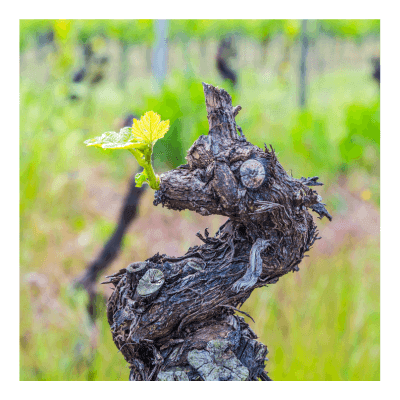
Chances are you will have seen the term “Old Vine” or one of its foreign equivalent terms such as “Vieilles Vignes”, “Alte Reben”, “Viñas Viejas”, “Vinhas Velhas” or “Antico Vitigno” on some wine labels. There is no requirement under any wine regulations that I know to mention the age of the vines used for wine grape production and yet old vine is a term that seems to be used increasingly frequently and with the implication that old vine wine should be held in high esteem. In this wine blogpost, I’m looking into whether grapes from older vines really do make better wine.
Here in the UK we have an amazing old vine at Hampton Court Palace. Planted in 1768 under Capability Brown’s direction, it is said to be the largest vine in the world but even at circa 250 years old, The Great Vine cannot claim that it is the oldest vine in the world as for a long time Georgia, Slovenia and Italy have claimed to have vines planted in the 17th century. Nor can it claim that its fruit is used for wine since it produces a table grape variety. In fact the 17th century has now been trumped as Weingut von Racknitz, a former monastery, in Germany claims to have a 600 year old vine found on an old abandoned terrace.
It is hard to imagine when looking at a woody, gnarly old vine that it could produce good quality fruit or indeed any fruit but vines can still produce grapes when very old – those Georgian, Slovenian and Italian 17th century vines are said to be producing grapes still used for wine today. Good quality grapes are not a given however – according to the Old Vine Registry, of which more later, grapes from the 600 year-old German vine taste “terrible, like cucumber”.
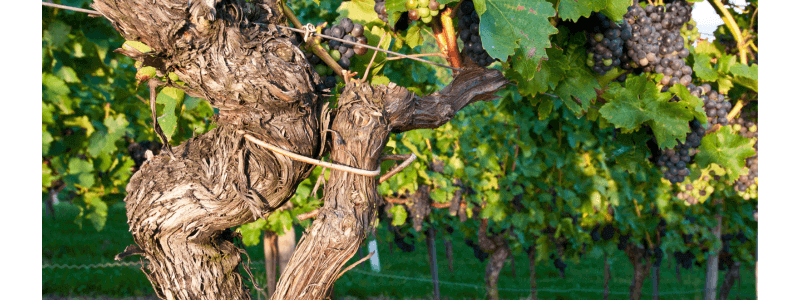
California started a register of its old vines in 2011; it is believed to have the highest number of old vines and ironically Prohibition played a major role in this as vines were simply abandoned at that time and later “rediscovered”. According to the Californian Historic Vineyard Society website “To qualify as a Certified Historic Vineyard, a vineyard must be a currently producing California wine vineyard with an original planting date at least 50 years ago, in which at least 1/3 of existing producing vines can be traced back to their original planting date.”
Over in Australia, the Barossa Valley is proud to have some of the oldest continuously-producing vineyards in the world. It is one of the few wine regions that avoided the phylloxera aphid which is the reason why most of the world’s vines are now grafted onto phylloxera-resistant rootstocks. Understandably keen to protect its precious ungrafted old vines especially after many were uprooted in the 1980s it saw what California was doing and started its own register of old vines. Australia’s Old Vine Charter categorises the old vines further according to their age:
Barossa Old Vine – Equal or greater than 35 years of age like the one to the right
Barossa Survivor Vine – Equal or greater than 70 years of age
Barossa Centenarian Vine – Equal or greater than 100 years of age
Barossa Ancestor Vine – Equal or greater than 125+ years of age
South Africa in fact has the oldest records of old vines dating back to 1900, a database run by the South African Wine Industry Information Systems (SAWIS). Since I first published a blogpost on this subject in 2017, South Africa’s Old Vine Project, set up in 2002 by viticulturalist Rosa Kruger, launched a Certified Heritage Vineyard seal which certifies that a wine is made from vines of 35 years and older. But producers don’t necessarily always put the seal on their bottles.
Conversely some wine producers don’t wait until a vine is 35 or 50 years old before labelling it an old vine; since there is no legal definition of the term ‘old vine’, it is very much a matter of personal preference or perhaps more of marketing preference but as old vine wines are generally and increasingly revered, the term old vine can be misleading. However we are beginning to see some signs of conformity in the registering and defining of the term ‘old vines’…
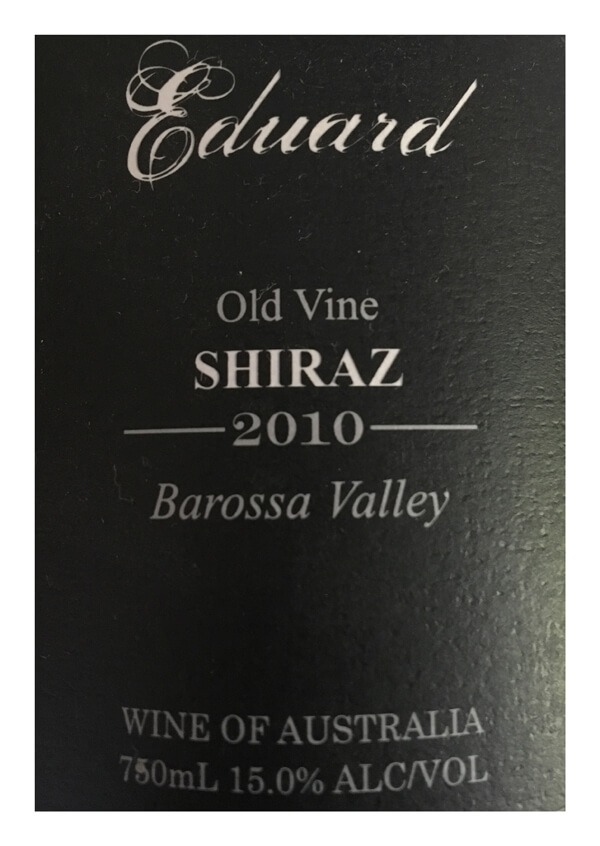
The most significant step in coming up with a worldwide recognised age for old vines since my last update is the 2023 launch of the online registry of old vines that was initiated on a spreadsheet in 2010 by Jancis Robinson’s Purple Pages. Now maintained by the Old Vine Conference, a non-profit organisation that aims to highlight the value of old-vine vineyards and make them economically viable, The Old Vine Registry is still very much a work in progress but is already the most comprehensive online database of old vines worldwide. You can search by country or by age and there are links to the vineyard owners’ websites. The ultimate aim is to also provide links so consumers can see where to find a particular vineyard’s wines. But, as mentioned, it is an on-going project and, since few countries have detailed records like South Africa, sometimes an estimation of age is all that is possible.
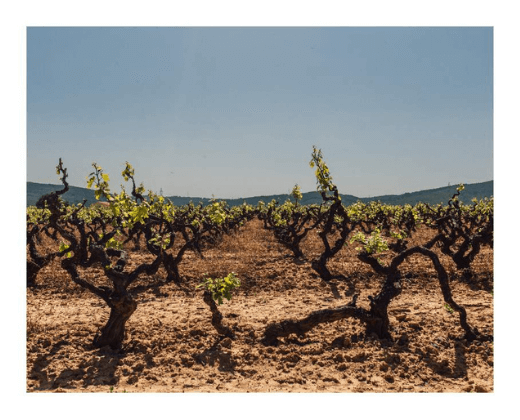
New vines take time to establish themselves; they don’t tend to produce many grapes until year three first concentrating on establishing their root structure and a sturdy trunk. It is usually only by year five or six that the grapes are of use for commercial wine production. After that the vine’s growth below and above ground is more balanced. As it ages further the vine’s growth becomes less vigorous and as a result fewer grapes are produced; this reduction in yield starts as early as the age of 20 years old.
This reduction in yield is in fact the very reason why older vines are sometimes ripped out (often with government subsidies) and replaced; they are considered as no longer economically viable as they are not producing as many grapes. However, this thinking has been changing for some years as wines from older vines are generally considered to have several advantages.
One benefit of a smaller harvest of grapes or lower yield from older vines is that the aromas and fruit flavours tend to be much more concentrated and intense – and there are often more of them. Not only will old vine wines display intense, concentrated flavours but also complexity or multiple layers of flavours, a more rounded or luscious mouthfeel and a good structure – largely due to a good balance of fruit, alcohol, acidity and smoother tannins. It is a combination of all these factors which lead many winemakers to believe that old vine wines better reflect the terroir than younger vines.
Other advantages are being discovered.
For example, old vines are more resilient to heat and drought and often develop immunity to pests and diseases; the deep-rooted systems are more resilient to changing climatic conditions and require less water and fewer pesticides, contributing to healthier vineyard ecosystems. These characteristics can be used to create more resilient young vines that need less or no irrigation, a valuable contribution to sustainability.
As the value of older vines is beginning to be appreciated, grape growers in some less affluent countries are finding that they are able to generate more income for their grapes which helps regenerate their local wine community.
And because of the better structure, old vine wines are likely to keep for longer than wines from newer vines.
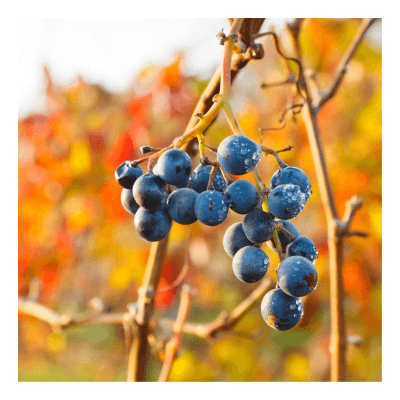
Yield will be the subject of another blogpost but, as those of you who have attended wine tastings with me will know, low yield is a very important factor, some say the key factor in producing good wine – and one reason why the wine quality classification systems in many countries like the AOC system in France stipulate a maximum yield per (AOC) region.
It is important to note however that it is not only old vines that can produce low yields. We already know that in its very first years a vine produces low yields and often these first crops can produce good quality wine (though it is not usually permitted by regulations to be released to the public).
There are also ways to reduce yield in the vineyard e.g.
fruit thinning also known as green harvesting – removal of some grape bunches from the vine so that resources are diverted to the remaining grapes helps produce more concentrated flavours
pruning, leaf management techniques and the way that a vine is trained on the wires (or left free-standing) can all have an impact
and let’s not forget good old terroir which I have written about before – old vines situated in an unsuitable area can produce poorer quality wines than newer vines planted in the “right” terroir. These days vineyard consultants are employed and extensive analysis completed to make sure that vines are planted in the most appropriate site.
So it is not just old vines that produce low yields. But old vines tend to be more naturally low-yielding since they don’t need as much green harbsting or canopy management. Yield plays a large part in the quality of a wine but whether more so than the age of the vines is open to debate
Grapes from old vines, if handled well, can produce really concentrated wine bursting with intense flavours. Younger vines with low yields can also produce great wines but the term “low-yielding young vines” is unlikely to make its way onto wine labels anytime soon. So, no wonder the term old vine is an attractive one for wine producers and sellers.
But as mentioned above the term “old vine” is largely undefined. Some producers are now mentioning the age of their vines or date the vines were planted on the label instead (as in this photo of a label from Precedent’s old vine Evangelho Zinfandel) – the Evangelho vineyard is certified by the Historic Vineyard Society but there is no evidence of that on the bottle and Precedent don’t call their wine “Old vine Zinfandel” perhaps because there are some poor quality supposedly old vine Zinfandels on the market. There is no regulation governing use of the term so there is a danger that it could be used for example where only a small percentage of old vine grapes are used in a wine or, dare I say it, if none of the grapes come from old vines. It can be a very useful marketing tool as the production and prestige of old vine wine adds a premium to the wine’s price.
Until the wine industry starts to use a common definition for old vines or there is more widespread use of the Certified Historic or Heritage Vineyard seals, use your common sense when buying wine – after all a £10 bottle of wine is unlikely to have come fully from old vine grapes despite what the label might be telling you.
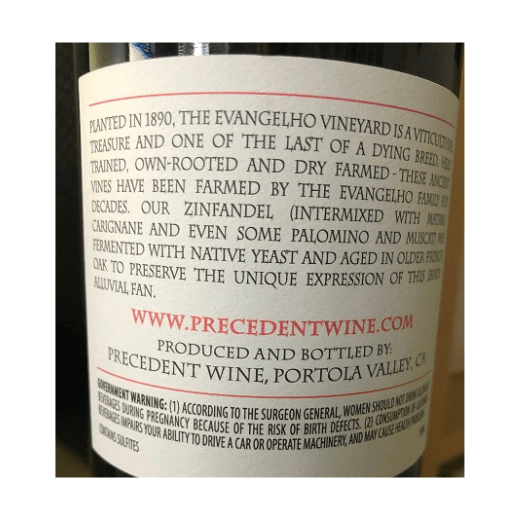
Whether or not old vines make better wines is a complex question with no easy answer. There are many factors that contribute to the quality of a wine, including the grape variety, the terroir, and the winemaking process. However, there is a growing consensus among winemakers and critics that old vines can produce wines with exceptional flavour, complexity and structure. Additionally, old vines are more resilient to climate change and pests, making them a sustainable choice for winemakers and consumers alike. As the popularity of old vine wines increases among consumers, it is likely that we will see more and more people willing to invest in these unique and special wines.
By their very nature, old vine wines are produced in smaller quantities than wines from younger vines, which means they are usually more expensive. However, studies by the University of California, Davis and the University of Cape Town found that consumers are generally willing to pay a premium for them. It is of course a personal choice – whilst old vine wines tend to be more complex and flavoursome, there are of course a great many wines from younger vines that are also delicious.
It is important to note that not all old vine wines are created equal. Some producers may use the term “old vine” loosely, so it is important to do your research before buying. Look for wines from producers who are transparent about the age of their vines and who have a good reputation for making quality wines. Or check out the Old Vine Registry – but remember it will be some time before all old vines are included.
Whether or not you are yet convinced about old vine wines, you can be sure that you will be hearing a lot more about them in the next few years.
© 2014-2025 Wines with Attitude Ltd | VAT Reg. No. 181 2419 22 | Registered in England 08918466 | Fiveways, 57-59 Hatfield Road, Potters Bar, Herts, EN6 1HS